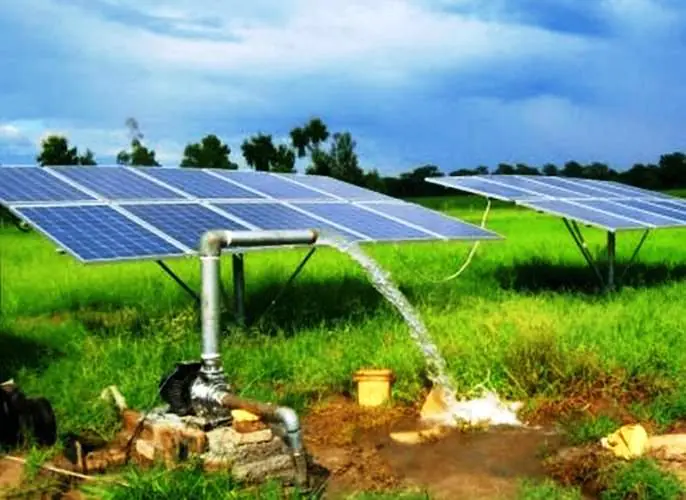3 HP Solar Water Pump & Price in india.
Water scarcity is a global concern, and finding efficient and sustainable solutions for water pumping is crucial. In recent years, 3 HP solar water pumps have gained popularity as an effective and eco-friendly option. These pumps utilize solar energy to pump water, offering numerous benefits such as reduced electricity costs and a lower carbon footprint. This article will explore everything you need to know about 3 HP solar water pumps, including their functionality, advantages, installation process, and maintenance requirements. Whether you are considering a solar water pump for agricultural or domestic use, this comprehensive guide will provide the necessary information to make an informed decision.

Understanding 3 HP Solar Water Pumps
What is a 3 HP Solar Water Pump?
A 3 HP solar water pump is a type of water pump that runs on solar energy. "3 HP" refers to the horsepower rating, indicating the pump's power to pump water effectively. These pumps are designed to draw water from various sources, such as wells, boreholes, or rivers, using solar power to drive the pump mechanism.
Components of a 3 HP Solar Water Pump
A typical 3 HP solar water pump system consists of several components:
-
Solar Panels: These panels capture sunlight and convert it into electricity. The number and wattage of the panels depend on the specific requirements of the pump and the available solar resource.
-
Motor: The motor converts electrical energy into mechanical energy, driving the pump's impeller or diaphragm to create water flow.
-
Pump: The pump mechanism varies depending on the type of pump. Common types include centrifugal pumps and submersible pumps. Centrifugal pumps are suitable for surface water sources, while submersible pumps are designed for wells or boreholes.
-
Controller: The controller regulates the operation of the pump system, managing the power supply from the solar panels to the motor. It ensures optimal performance and protects the components from damage.
-
Storage Tank: In some setups, a storage tank is included to store water for later use, ensuring a constant supply even during periods of low sunlight or high demand.
How to do 3 HP Solar Water Pumps Work?
3 HP solar water pumps harness energy from the sun through photovoltaic (PV) panels. These panels convert sunlight into electricity, which powers the pump motor. The motor drives the pump's impeller or diaphragm, creating suction or pressure that lifts water and delivers it to the desired location.
3HP Solar Pump Price
| Solar Water Pump Type | Selling Price |
| DC Submersible Solar Pump | Rs. 2,08,000 |
| AC Submersible Solar Pump | Rs. 1,95,000 |
| AC Surface Solar Pump | Rs. 1,80,000 |
| DC Surface Solar Pump | Rs. 1,95,000 |
| 3HP VFD Solar Solution | Rs. 1,30,000 |
| Hybrid 3HP Solar Pump | Rs. 2,50,000 |
| On Grid 3 HP Water Pump | Rs. 2,40,000 |
Advantages of 3 HP Solar Water Pumps
3 HP solar water pumps offer several advantages over conventional water pumps. Here are some key benefits:
-
Energy Cost Savings: Using solar power 3 HP solar water pumps significantly reduce or eliminate electricity costs. Once installed, the energy from the sun is free, resulting in long-term savings.
-
Environmental Sustainability: Solar water pumps are powered by clean and renewable energy, reducing reliance on fossil fuels and minimizing carbon emissions. They contribute to a greener and more sustainable environment.
-
Reliable Operation: 3 HP solar water pumps provide a reliable water supply, even in remote areas with limited or no access to electricity. They suit various applications, including agriculture, irrigation, and domestic water supply.
-
Low Maintenance: Solar water pumps have fewer moving parts compared to traditional pumps, resulting in lower maintenance requirements. This translates to reduced maintenance costs and increased system reliability.
-
Scalability: 3 HP solar water pumps can be scaled up or down to meet different water pumping requirements. This flexibility makes them suitable for both small-scale and large-scale applications.
Installation and Maintenance of 3 HP Solar Water Pumps
.webp)
Installation Process
The installation of a 3 HP solar water pump typically involves the following steps:
-
Site Assessment: A thorough site assessment determines the best location for installing the solar panels and the pump system. Factors such as solar exposure, water source proximity, and topography are taken into consideration.
-
Solar Panel Installation: The solar panels are mounted on a structure, such as a rooftop or ground-mounted frame, to maximize solar exposure. They should be positioned at the optimal angle and direction for maximum sunlight absorption.
3. Pump System Installation: The pump, motor, controller, and storage tank (if applicable) are installed based on the manufacturer's guidelines. Proper connections and wiring are established to ensure efficient operation.
- Testing and Commissioning: Once the installation is complete, the system is thoroughly tested to ensure all components are functioning correctly. This includes testing the water flow rate, pressure, and motor performance.
Maintenance Requirements
Regular maintenance is essential to ensure the longevity and efficient operation of your 3 HP solar water pump. Here are some key maintenance considerations:
-
Cleaning the Solar Panels: Regularly clean the solar panels to remove any dust, dirt, or debris that may reduce efficiency. Use a soft cloth or sponge and mild detergent to clean the panels gently.
-
Inspecting and Lubricating Moving Parts: Periodically check the pump's moving parts, such as the impeller or diaphragm, and ensure they are clean and free from any obstructions. Lubricate the parts as recommended by the manufacturer to minimize friction and ensure smooth operation.
-
Checking Electrical Connections: Regularly inspect the electrical connections, ensuring they are secure and free from corrosion. Loose or damaged connections can affect the performance of the pump system.
-
Monitoring Performance: Keep track of the pump's performance, including water flow rate, pressure, and any unusual sounds or vibrations. If you notice any issues, consult a technician for inspection and repairs.
